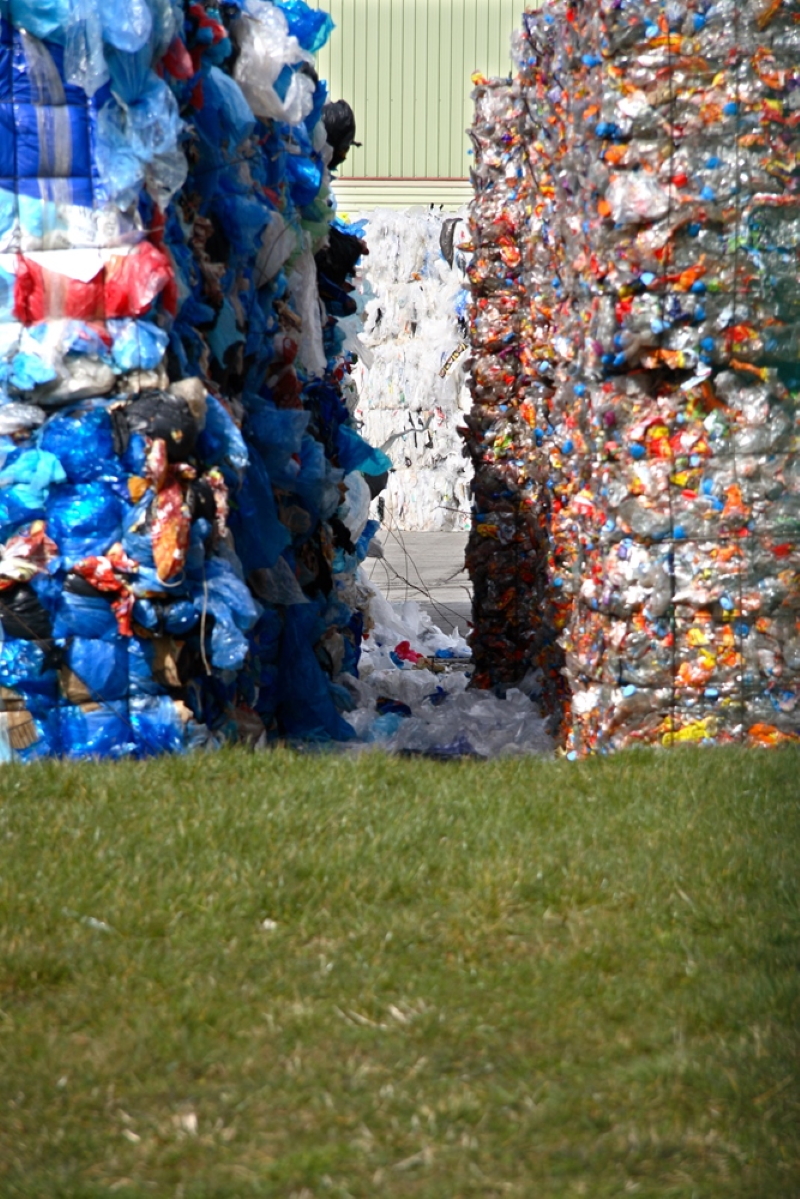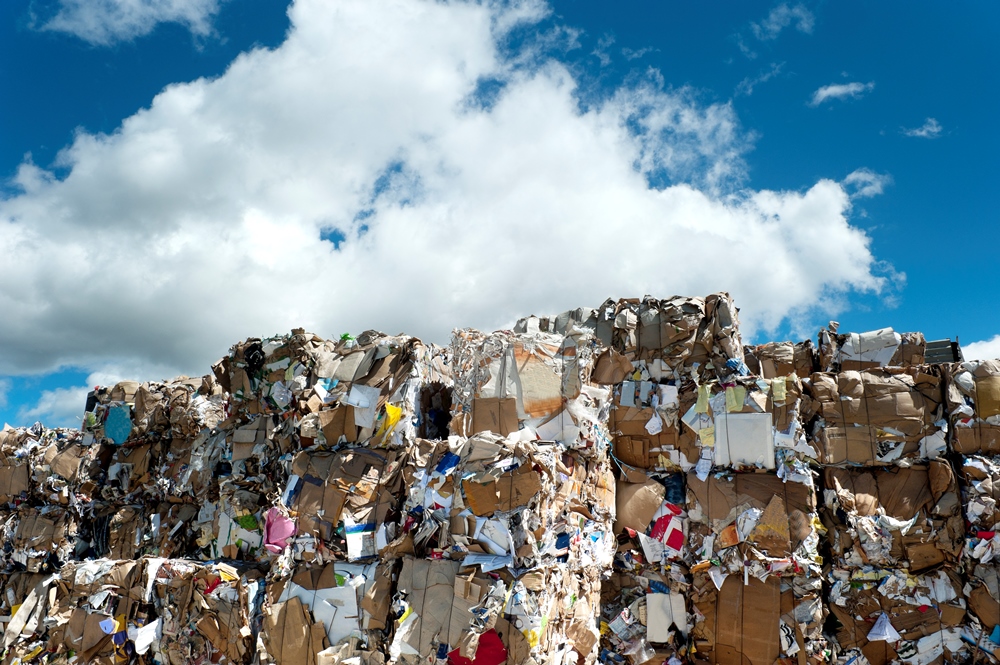7 November 2016
Clarity on recycling statistics
European Commission proposes uniform calculation methodology for recycling
Recycling statistics are often confusing. They are hard to compare and tend to reflect amounts collected rather than actual recycling rates. The European Commission wants greater clarity and has proposed a single uniform calculation methodology. The underlying principles are widely endorsed, but the sector questions their practicability.
In the waste management community - or rather, the raw materials community - the circular economy is pretty much the hottest topic in town right now. Key to the circular economy are reuse and recycling. But the curious thing is, it is far from clear exactly how much waste is being reused and recycled. The confusing European statistics have been a constant source of irritation to governments, the business community and the European Commission itself for years. Everyone feels the need for a harmonised calculation methodology and reporting format. For one thing, comparable statistics are needed to track the progress being made by the member states towards meeting EU recycling targets. Harmonised reporting will also create clarity for local authorities, which have to meet central government targets for recyclable municipal waste. And equally important, better statistics will stimulate the value chain to innovate and produce quality materials.

To track the progress being made by the member states towards meeting EU recycling targets it is important to have comparable statistics.
Confusion
This confusion has its origins in the current Waste Framework Directive, which came into force in 2008. The Directive offers member states a choice of four different methods for calculating national tonnages of recycled municipal waste. Some member states include just household waste in these calculations, while others report a broader category of 'municipal and similar waste'. For example, Germany includes organic waste in its municipal waste category, whereas the Netherlands reports it separately. The point in the waste management chain where the recycling result is measured also varies between post collection and post sorting - both are allowed.
Proposed new methodology
The compulsory review of the Waste Framework Directive gives the European Commission an opportunity to harmonise these statistics. In June 2016 the Commission published a review proposal containing two key changes to the requirements for reusing and recycling municipal waste: extra weight targets and a clear calculation methodology. The new targets have been endorsed by the member states and the European waste industry, but there is less agreement on the proposed calculation methodology.
The Commission's proposal is a compromise between an ideal situation and the awkward realities of the marketplace. Ideally, the exact amount of secondary raw materials used to replace 'virgin' materials should be reported for each local authority, member state and waste fraction. But that is simply not realistic. Recycling is often done in distant, opaque markets. And even within the European Union, recyclers and other customers are reluctant to reveal their internal material flows.
Measure further up the chain
Nevertheless, the Commission wants to end the option of basing statistics on collected tonnage and move the measurement point back up the materials chain. For reuse, the measurement point would then be where the secondary raw material, sorted and cleaned, is sent for reuse. For recycling, the measurement point would be the entrance to the plant where the recyclate enters the final recycling process. Emmanuel Katrakis, secretary-general of the European Recycling Industries' Confederation (EuRIC), fully supports the need for harmonised calculation methods to benchmark progress towards a circular economy. 'Recycling should be measured at the point where waste is turned into new resources that can replace virgin materials. Therefore, EuRIC is opposed to the new term "final recycling", defined as when waste enters a production process. The term "final recycling" leads to confusion between recycling and manufacturing. Manufacturers able to source their materials from both primary and secondary sources could then claim that they are recyclers, whereas in fact they are using recycled raw materials that meet industry specifications, quality standards or end-of-waste criteria. For example, metal works, foundries and pulp mills use recycled materials that replace primary resources in their production processes. We have repeatedly warned the Commission to protect the clear definition of recycling in the 2008 Waste Framework Directive and not to introduce the term "final recycling", as that would open a Pandora's box.'
DREC method
EuRIC points to the approach taken in the DREC'(Destination RECycling) calculation method developed by the thirteen partners in the R4R (Regions for Recycling) initiative. 'The DREC method uses a more logical measurement point in the waste stream for different fractions,' says Emmanuel Katrakis, secretary-general of EuRIC. R4R was set up in 2014 by thirteen subnational authorities with funding from the European Regional Development Fund (ERDF). An important aim is to end the inconsistencies in the calculation method of waste streams, which is exactly the objective pursued by the circular economy package. The DREC method for calculating recycling amounts uses detailed flow diagrams and instructions for each fraction, based on actual processing practices.
Doubts about practicability
The sector has doubts about the practicability of the proposal. Various parties think the Commission's proposal ignores the diversity of treatment processes used for different material streams. 'The proposal is a desk exercise based on insufficient knowledge of materials chains,' says Robert Corijn, marketing manager at waste processor Attero. 'It sounds good in principle, but I doubt whether it can be put into practice.' As an example he mentions the general condition that after measurement a further ten per cent loss of weight may occur during the final recycling process. 'For difficult plastics a thirty per cent loss is currently normal. Will Dutch sorters have to ask German and Chinese recycling companies how much material has been lost? That's not how things work there. Besides, recyclers could switch to materials for which they are not asked to provide any trade secrets.'
Robert Corijn (Attero):
"The proposal is a desk exercise based on insufficient knowledge of materials chains."

What matters most is not how many tonnes are recycled, but that the quality of the final product is acceptable to the customer.
Focus more on quality
More fundamental is Corijn's criticism of the disproportionate focus on quantity. 'What matters most is not how many tonnes are recycled, but whether the quality of the final product is acceptable to the user. Clearly there is certain trade-off between quality and quantity, because higher quality often means having to accept a greater loss of material. But in the end it is all in the interests of a healthy circular economy.' Weiger Droogh, CEO of SUEZ Netherlands and chair of the DWMA Policy and Strategy Committee, also stresses that in the end the key thing is providing the market with high quality products. 'Our sector tends to be rather conservative in this respect. You could, of course, impose tighter standards, or demand that Asian recyclers meet all sorts of certification requirements, but in the end active partnerships between collectors, sorters, recyclers and customers are more effective, and in that respect we still have a lot of ground to make up.'
Wieger Droogh (SUEZ):
"A thorough impact assessment should be made to see whether or not the proposals are feasible and verifiable in practice."
Recycling status for WtE bottom ash
Since the introduction of the Green Deal on WtE bottom ash in 2012, the Dutch waste sector has argued that clean building materials recovered from WtE bottom ash should be classified as recycling. The calculation methodology for recycling should therefore also include clean bottom ash. Minerals recovered from bottom ash could then be included in the reported recycling tonnages. The EEB, the federation of environmental organisations in Europe, acknowledges that some of these minerals can be recovered and recycled, but does not want to include bottom ash in the discussion about municipal waste recycling. 'The original waste streams from which bottom ash is derived are too diverse for this,' says Piotr Barczak of the EEB. However, Robert Corijn of Attero counters this by arguing that municipalities trying to achieve their VANG targets (VANG is the Dutch government's 'From Waste to Raw Material' programme) would be only too happy if minerals from bottom ash could be counted towards their recycling targets. 'This would also be technically justified as these materials are recovered from wastes, processed into clean building materials and then used as secondary raw materials. This reduces the use of fossil fuels.'
Thorough impact assessment
'In any case,' says Droogh, 'as soon as a compromise is reached on definitions, targets and measurement methods, we think it should be subjected to a thorough impact assessment before making a decision - not to test different scenarios like the Commission's assessment in 2014, but to see whether or not the proposals are feasible and verifiable in practice.'
Environmental movement: 'More ambition'
The environmental movement supports the aim of harmonising targets and calculation methods, says Piotr Barczak of the European Environmental Bureau (EBB) in Brussels. 'But we advocate a return to the more ambitious targets in the Commission's 2014 proposal. Member states have until 2030 to achieve higher targets. Derogations or longer deadlines for some member states also send the wrong signals. Instead, it would be better to help them to innovate and find markets so that they can meet the targets.'
Piotr Barczak (EEB):
"We support the aim of harmonising targets and calculation methods."



